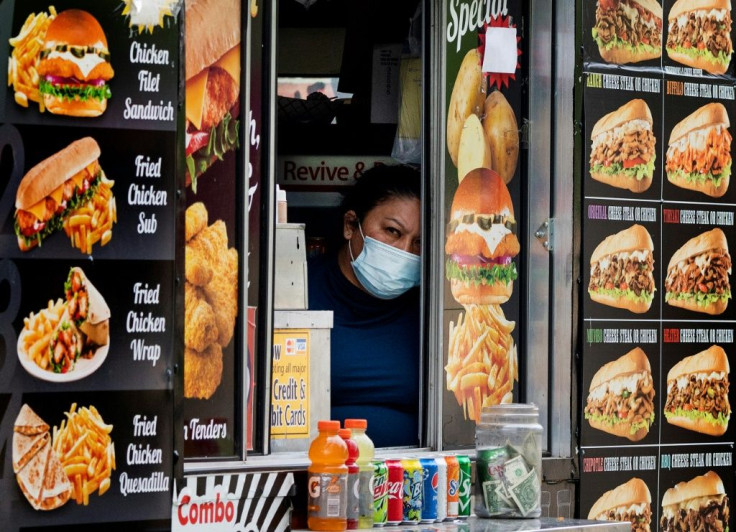US Hiring Underwhelms In May As Economic Reopening Hits Turbulence
The United States added 559,000 jobs last month as hard-hit sectors rehired workers laid off during the worst days of the pandemic, but analysts warned the virus was continuing to complicate the economy despite massive government stimulus.
The Labor Department data undershot analysts' expectations for a lofty rebound in hiring enabled by accelerating Covid-19 vaccination campaigns, following the surprisingly weak employment gains in April.
Even so, the jobs gains pushed the unemployment rate down to 5.8 percent from 6.1 percent in April.
Rubeela Farooqi of High Frequency Economics said the report indicated unemployed Americans were staying away from workplaces as companies rehired, which she blamed on the persistent aftershocks from business restrictions meant to stop the virus from spreading.
"Job growth remains surprisingly sluggish in an economy that is no longer facing capacity constraints," she said in an analysis, adding, "Ongoing pandemic-related issues including childcare and health concerns are likely a constraint on job growth."
That echoes widespread reports from businesses about the difficulty filling open positions.
President Joe Biden acknowledged the bumpy recovery but said his bet on the $1.9 trillion pandemic rescue measure he signed into law in March was paying off, helping the economy recover strongly from the mass layoffs that put tens of millions of people out of work as the pandemic began in March 2020.
"This is progress, historic progress" after "our worst crisis in 100 years," Biden said of the data.
He said the country was leading the world in recovering from the pandemic with two million jobs created in his first four months in office.
"No other major economy in the world is going as fast," he said.
The US economy still has a long road to travel before it can return to the record-low unemployment seen before the pandemic hit. The May data showed there are still 7.6 million jobs yet to be regained from February 2020.
"We're going to hit some bumps along the way," Biden said. "You can't reboot the world's largest economy like flipping on a light switch."

Still, the report contained important evidence that people who wanted jobs were getting them, with 431,000 people leaving the ranks of the long-term unemployed, dropping the total to a still-high 3.8 million in May.
Sectors that were badly damaged by pandemic business restrictions made up the bulk of the employment gains last month, with the leisure and hospitality sector adding 292,000 jobs, two-thirds of which were in businesses like bars and restaurants.
Accommodations added 35,000 jobs, and amusement, gambling and recreation businesses added 58,000, but the leisure and hospitality sector overall remains short 2.5 million positions compared to February 2020, the report said.
Brian Deese, director of the White House National Economic Council, noted the jobs report was based on data for the week of May 12, and since then vaccinations have increased further as business restrictions eased.
"Since that period, an additional 21 million adult age Americans have gotten fully vaccinated, and so we're making progress even since this snapshot in time," Deese told reporters.
In a trend the Labor Department attributed to the struggles firms are facing as they try to attract unemployed workers back to the job, hourly wages increased strongly, rising 15 cents to $30.33 after a 21-cent gain in April.
"The data for the last two months suggest that the rising demand for labor associated with the recovery from the pandemic may have put upward pressure on wages," the report said, noting the pandemic's employment disruptions "complicate the analysis" of wage trends.
The Labor Department revised the gains for previous months slightly, with a March increase of 785,000 and April at 278,000, a net increase of 27,000 for the two months.
However, there was little improvement in other key gauges of employment health, with the number of people not in the labor force who currently want a job unchanged from April at 6.6 million.
The labor force participation rate indicating the share of working-age adults employed or looking for a job remained basically unchanged from April at 61.1 percent -- 1.7 percentage points below its level before the pandemic.
Ian Shepherdson of Pantheon Macroeconomics said the labor force is more than five million individuals smaller than it would be if the pre-pandemic trends had continued, bolstering the case that employers are not getting takers for open jobs.
"The lesson here seems to be either that employers have to pay more -- and perhaps much more -- in order to drag people into the labor force, or they have to wait until the forces which might be responsible for keeping people away from work fade," Shepherdson said.
© Copyright AFP 2024. All rights reserved.





















